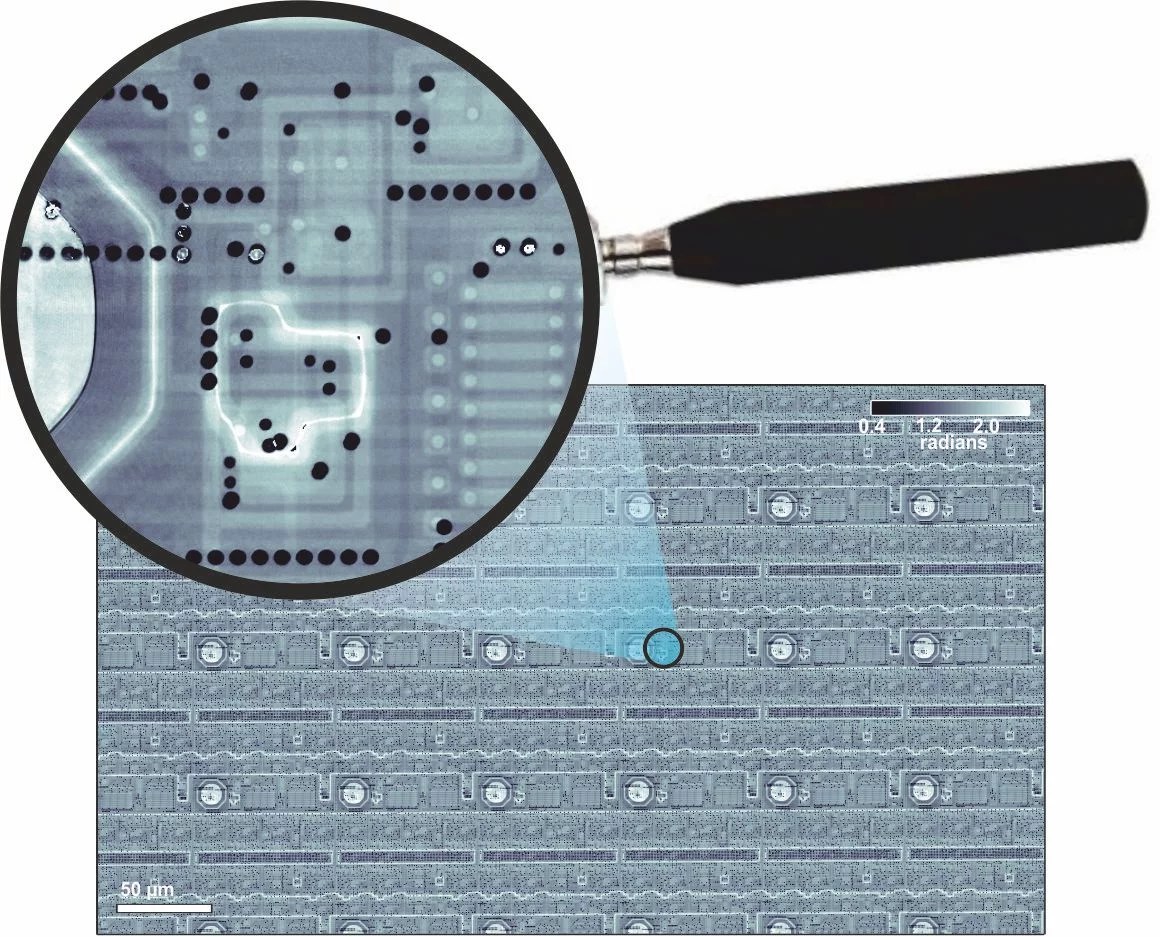Coherent diffractive imaging (CDI) exploits the coherence of synchrotron X-ray sources to create diffraction limited images, using image reconstruction to bypass the need of X-ray optics which suffer from limitations in resolution and efficiency. In particular a scanning variant of CDI, termed ptychography, is in development at the Swiss Light Source (SLS). The technique poses stringent requirements on X-ray detectors as for a typical scan hundreds of far-field diffraction patterns are to be measured with a high dynamic range, negligible point spread function, and high signal-to-noise ratio (SNR). The diffraction patterns are then processed using iterative image reconstruction algorithms to yield a highly-resolved image of the sample transmissivity. Ptychography provides a unique combination of quantitative contrast, high-resolution and exquisite phase sensitivity, which allows measuring detailed 3D maps of the sample electron density. The technique is rapidly moving away from demonstration experiments towards applications and it is raising considerable interest among materials and biological sciences.
The Eiger self-portrait
In order to benchmark ptychography throughput with a newly commissioned Eiger 500k detector, researchers of the Coherent X-ray Scattering (CXS) in close collaboration with the Detectors Group and Scientific Computing, all from Paul Scherrer Institut, measured a large 500 μm × 290 μm region of an integrated electronic circuit. As a known test sample with contrast and features resembling real applications they imaged a readout chip of an Eiger detector. Measurement and joint reconstruction of the close to 12,000 diffraction patterns also required development of new acquisition and algorithm strategies, which are detailed in their publication.
Through this effort, they demonstrated an imaging rate above 25,000 resolution elements per second on a 98.4 Megapixel image with 41 nm resolution. The image shows in detail all chip and transistor elements expected from the design and comprises the largest and fastest image acquired using CDI. “With appropriate instrumentation this imaging rate should also be achievable elsewhere, and there is still a lot of room to improve,” remarks Manuel, the lead author. “As a community we have focused for long on exploring applications and pushing the limits of sensitivity and resolution of ptychography, but once scientific samples come into play throughput also becomes a key consideration.” For a complete study a representative area or volume on a number of samples needs to be measured, and these advancements are expected to have its most dramatic impact in the application of ptychography for 3D imaging as regularly performed at the cSAXS beamline of the Swiss Light Source.
Download
A full resolution reproduction in PDF format is available for download here (47 MB). If printed in A0 paper a print resolution of 300 dpi is enough to capture all details.Reference
High-throughput ptychography using Eiger: scanning X-ray nano-imaging of extended regionsManuel Guizar-Sicairos, Ian Johnson, Ana Diaz, Mirko Holler, Petri Karvinen, Hans-Christian Stadler, Roberto Dinapoli, Oliver Bunk, and Andreas Menzel
Optics Express, 22, 14859-14870 (2014) DOI:10.1364/OE.22.014859
Contact
Dr. Manuel Guizar-Sicairos, Swiss Light SourcePaul Scherrer Institut, 5232 Villigen PSI, Switzerland
Phone: +41 56 310 3409, e-mail: manuel.guizar-sicairos@psi.ch
